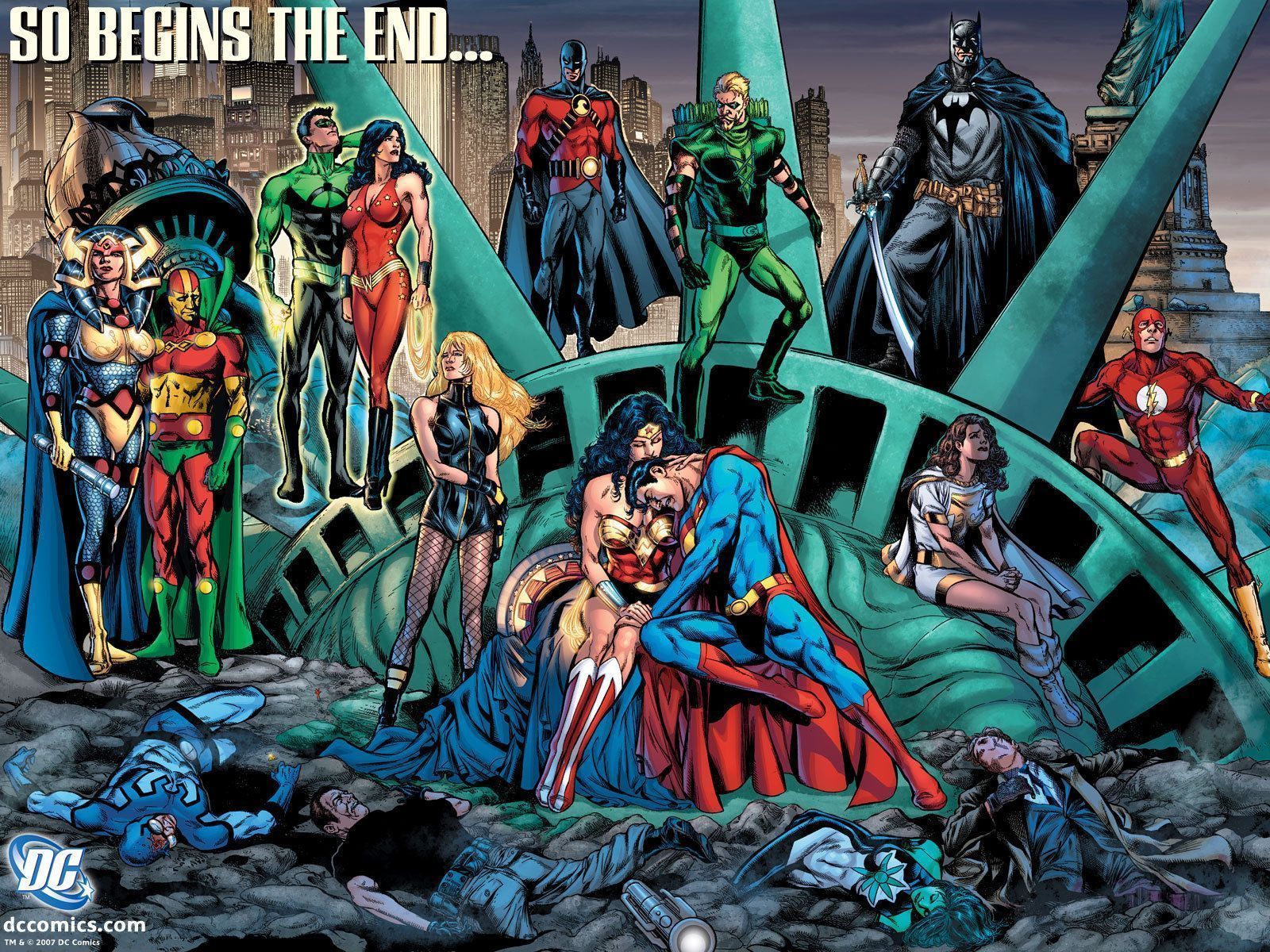Let the Mystery Be
Leveraging the unknown isn’t the typical play at the Big Two these days. They should get back to that.
Back in 2007, DC Comics released two teasers for the then-upcoming Countdown to Final Crisis, a weekly series that eventually led into the event Final Crisis. While little was said on each — there were only a combined ten words gracing these images — the pictures were worth far more than 1,000 words. The art was loaded with intricate clues, hints at what may come in the series, as well as who and what could factor into the story. I loved these, as I desperately drank in all the details, concocting hypothesis after hypothesis about what could happen within.


It wasn’t just me either. Whether it was on online forums or in the comic shop, discussions raged. Comic fans slash amateur detectives dissected each piece to determine the answer to one question: “What could all this possibly mean?!” Anticipation was created and interest was stoked on the strength of two fairly standard images that combined individual heroes and villains arranged in assorted postures and poses with a bevy of surrounding objects. That was all it took to light the flame for many comic fans.
The funny thing about all this is that Countdown was a very bad comic. And yet, I bought and read every issue because I wanted those answers 10 and there was only one place to find them.
That’s the power of a well-crafted teaser. When one manages to say nothing concrete while laying out infinite possibilities, 11 then superhero fans cannot help but be entranced by the form. That’s because the secret of superhero comics isn’t that they’re always stuck in the second act. We know and understand that. It’s that fans realize this and still can’t help but wonder, “What’s next?” That’s where the heat of Big Two stories come from. It isn’t about the end of the road; it’s the journey filled with endless unknowns and the curiosity they arouse that we cannot resist.
That’s why inspiring speculation — which, in this case, means fans hypothesizing about upcoming stories rather than buying comics for the eventual purpose of reselling them — is such a powerful tool. It leverages our basest desires as comic fans, using the intrigue of the unknown to fuel purchases. It’s also why a well-executed teaser can be so impactful. It’s one of the quickest paths to getting superhero fans talking, working readers into a tizzy while drawing attention to a pending release.
And yet, we’ve seen a shift in recent years, one that has found opacity replaced as a tactic with clarity, to some degree. Teasers aren’t as thoughtfully deployed anymore, and answers drive promotional material more than questions. While that might not seem like a major issue, it does feel like part of the reason there’s less energy in discussions about superhero comics: there just isn’t as much mystery anymore.
subscribers only.
Learn more about what you get with a subscription
I also loved its preceding weekly series, 52, so much that I had irrational hope it would improve. It did not!↩
That’s the distinction between a teaser and a regular ad. Ads tell you exactly what’s coming and when. Teasers are an ad that says something is coming but focuses on core mysteries by omitting details.↩
How many #1s can a person really excited for in any given year?↩
Which, I must ask…is that something I want? I don’t want to pay money to be traumatized! It’s a Spider-Man comic, not an Ari Aster movie!↩
Well, I mean, they used to be, at least.↩
Incredibly, this may be an underestimation of the actual number.↩
That might also be a factor as to why Phase Four has been more of a struggle. There’s no central mystery that ties everything together like Thanos and the Infinity Stones did, so conversation has been a bit more wayward.↩
Which, admittedly, is not all him. There’s a whole team he works with and attributing those decisions entirely to him wouldn’t be accurate. It just seems as if his projects are consistently executed the right way, so he’s the commonality here.↩
Just compare that Grootfall teaser with the launch of this one. There’s a gap of nearly 10,000 likes on the tweet revealing each. Part of that is Hickman’s name, but part of it is approach.↩
I also loved its preceding weekly series, 52, so much that I had irrational hope it would improve. It did not!↩
That’s the distinction between a teaser and a regular ad. Ads tell you exactly what’s coming and when. Teasers are an ad that says something is coming but focuses on core mysteries by omitting details.↩
